In Harmony with the nature The student 1

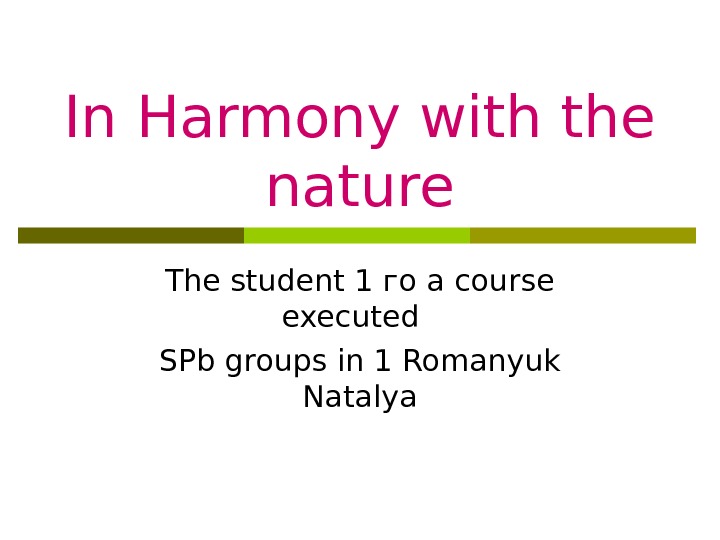
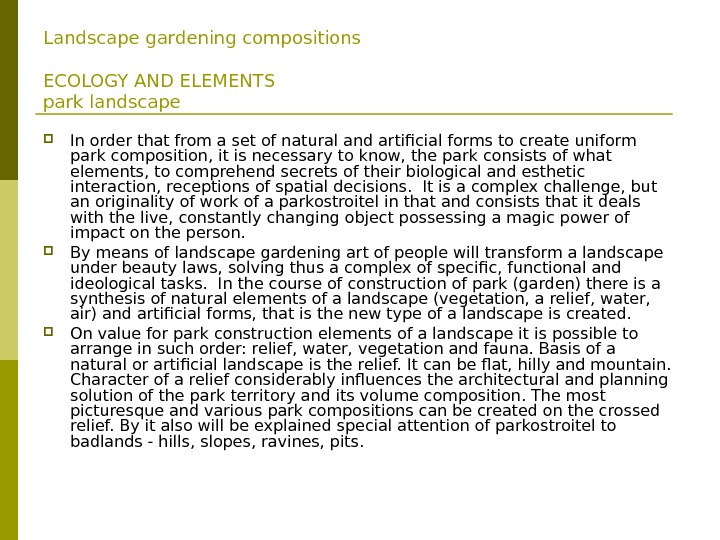
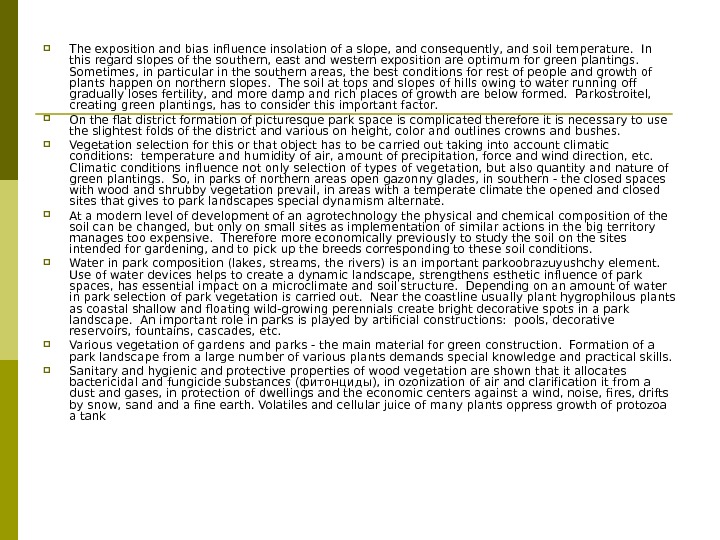
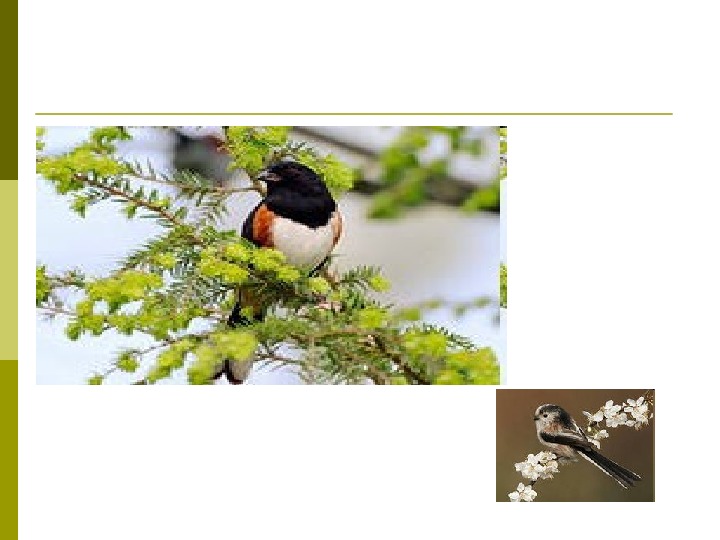
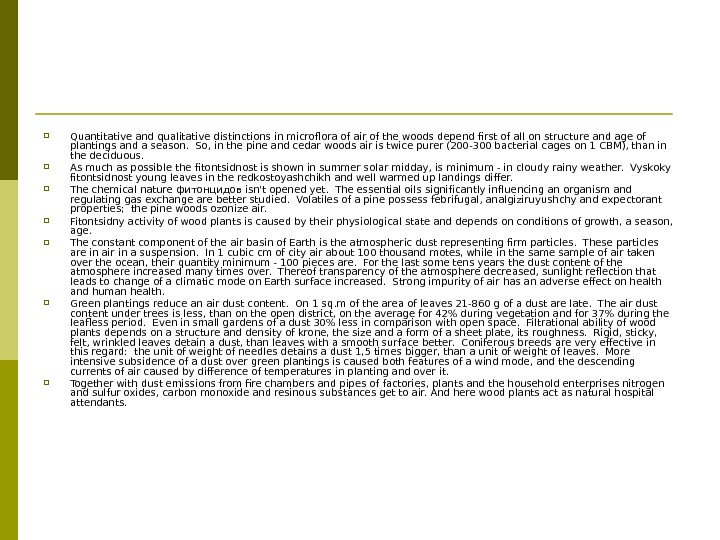
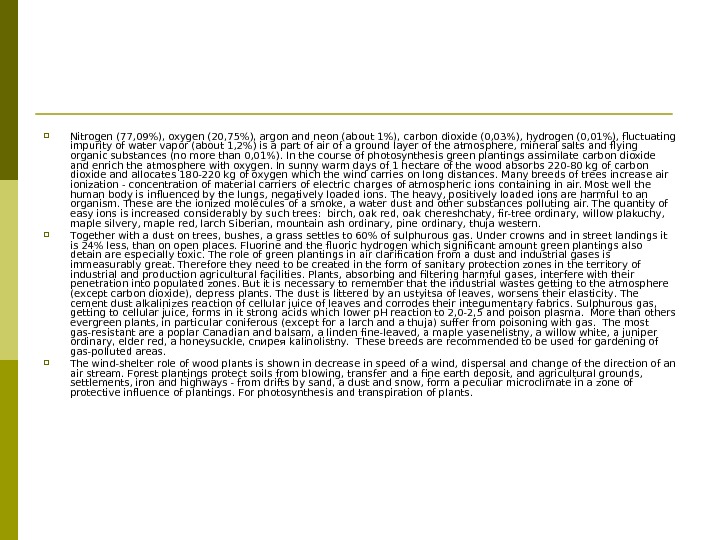
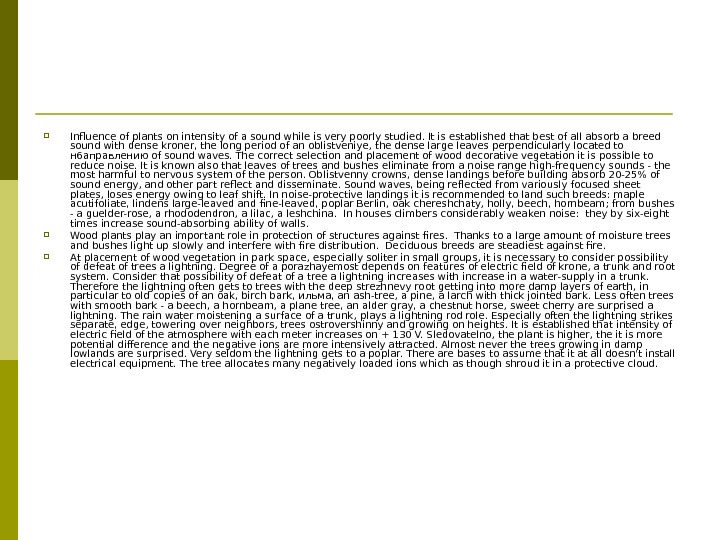
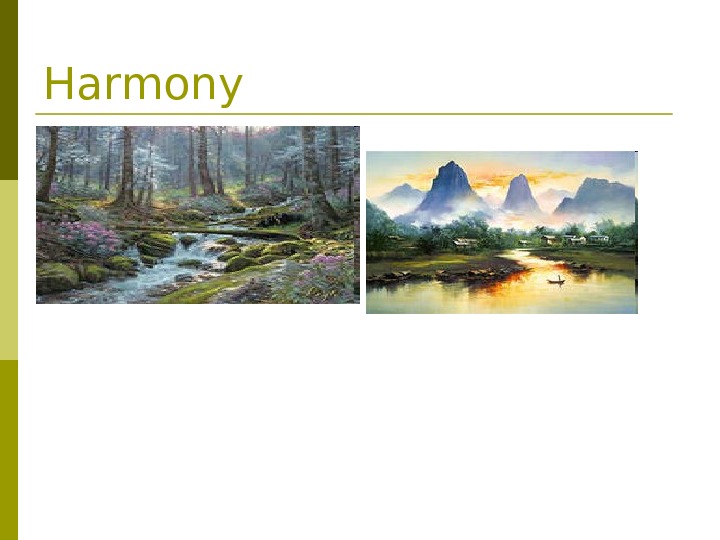
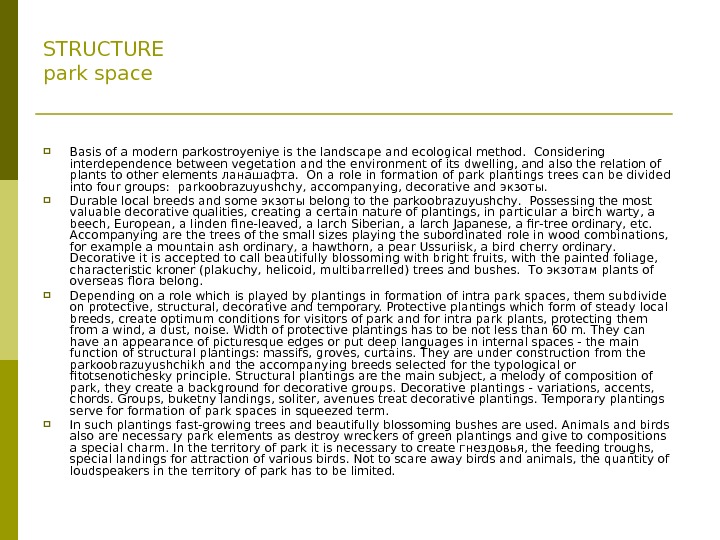
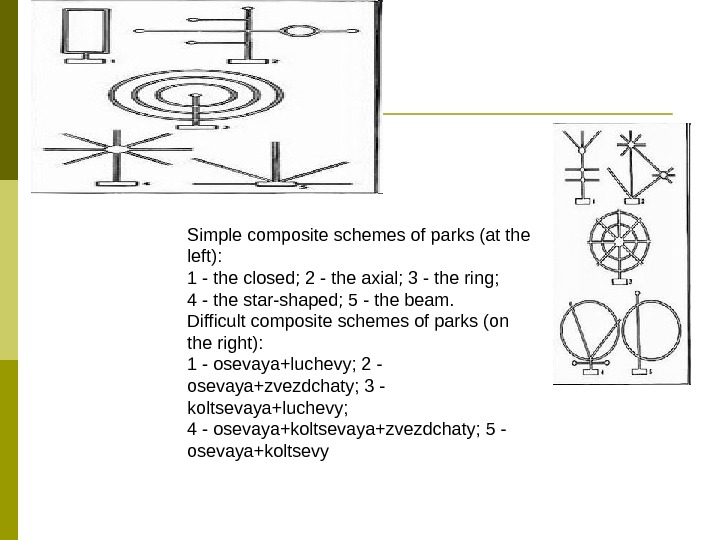
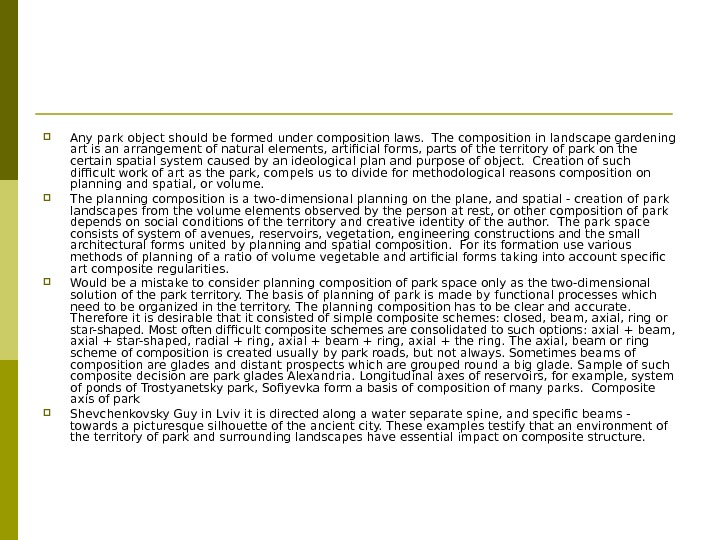
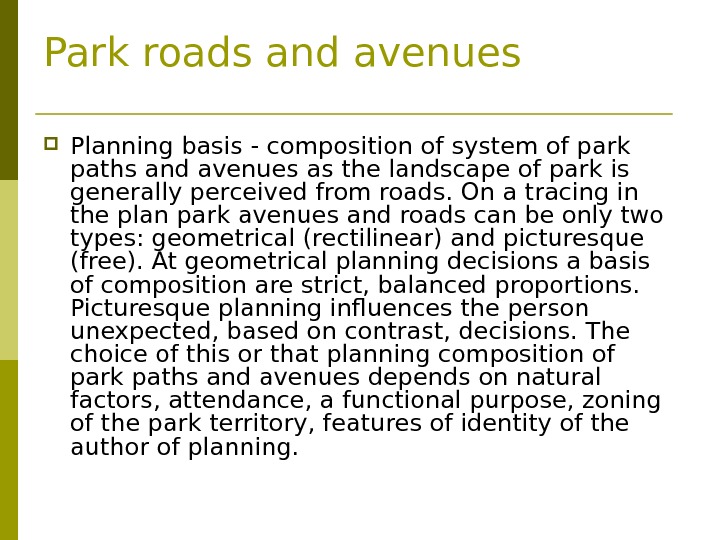
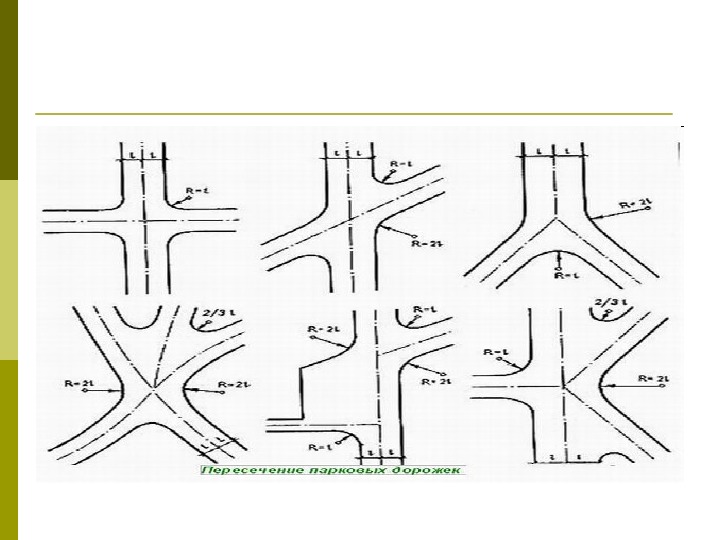
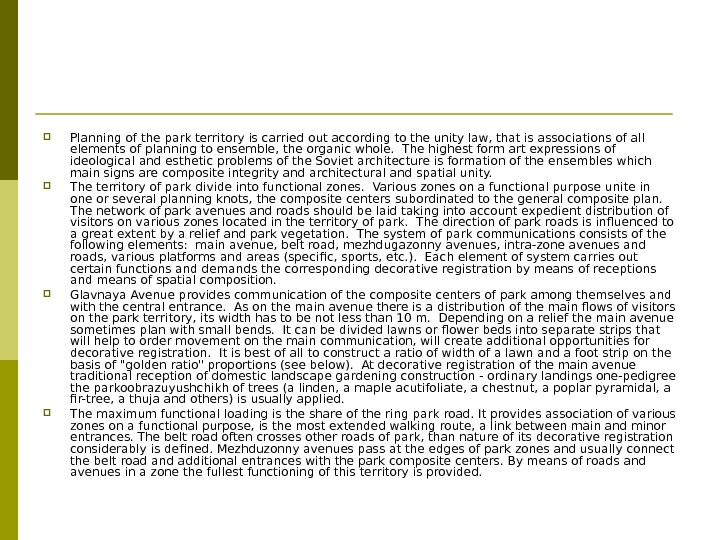
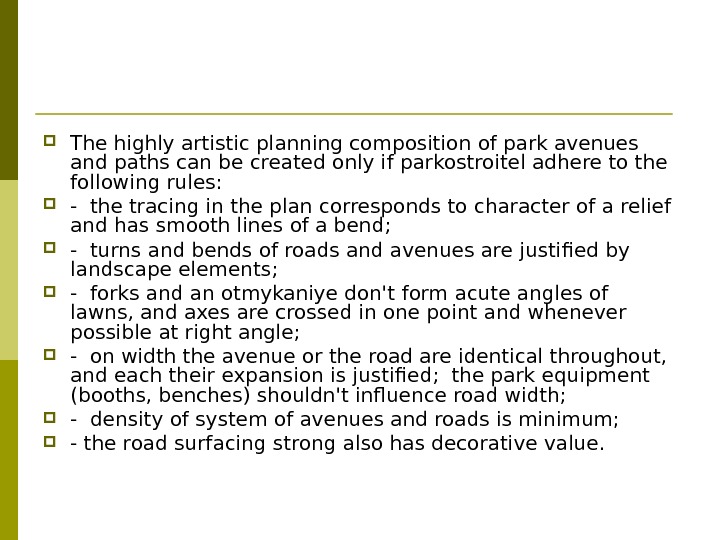
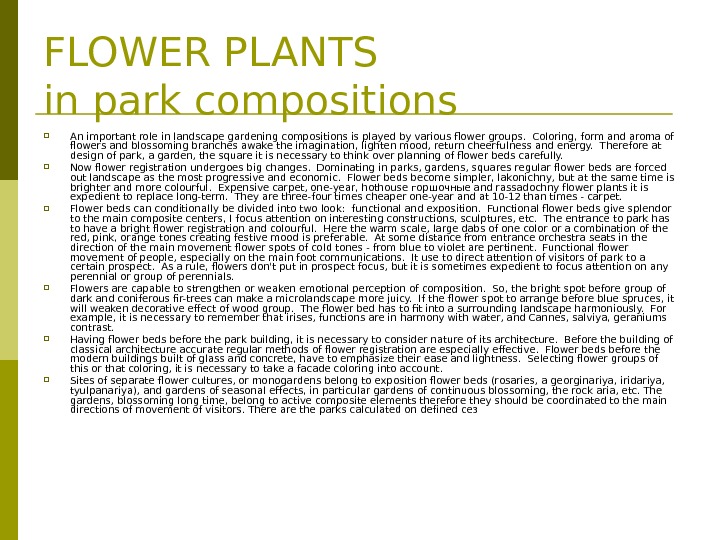
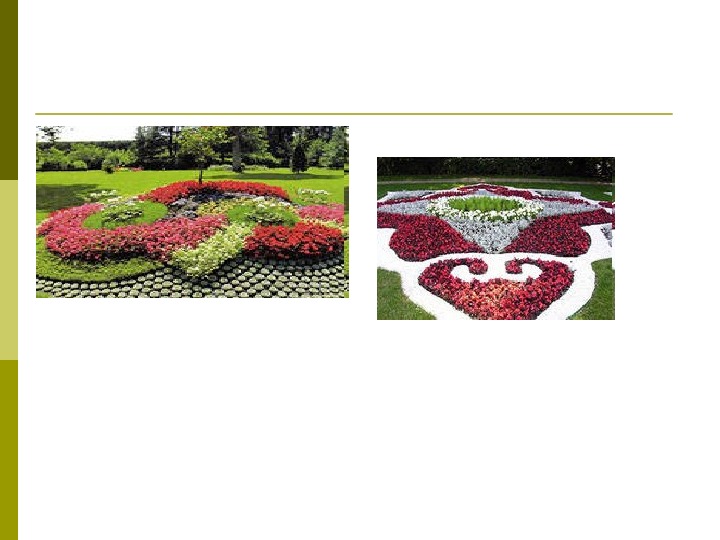
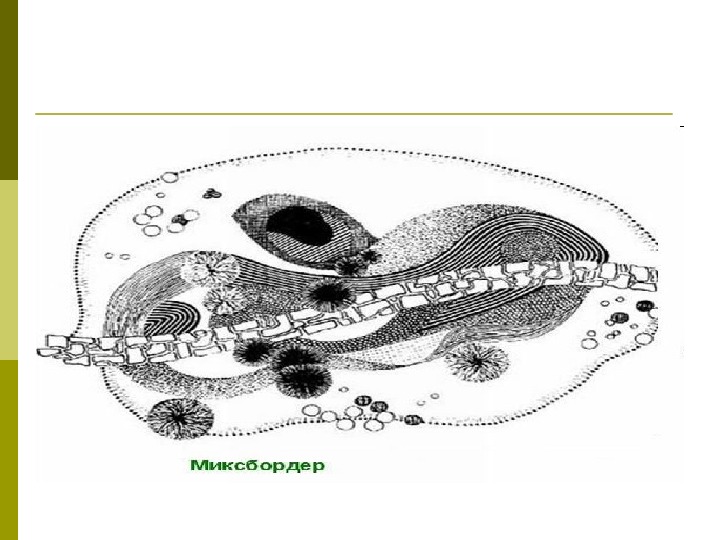
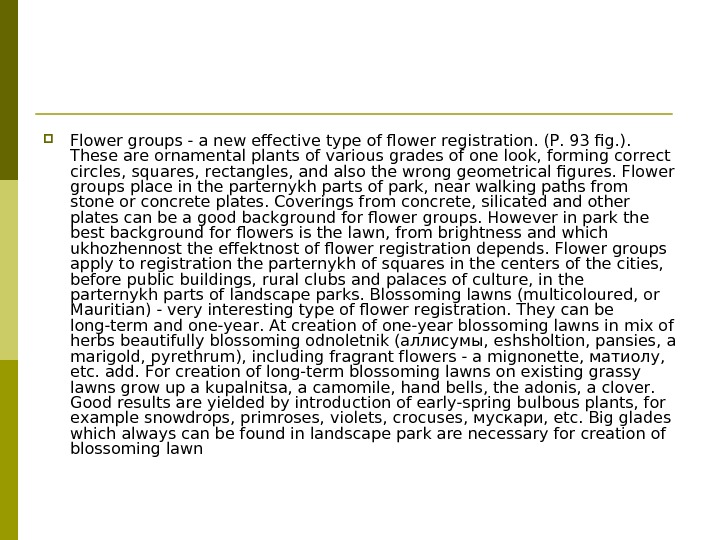
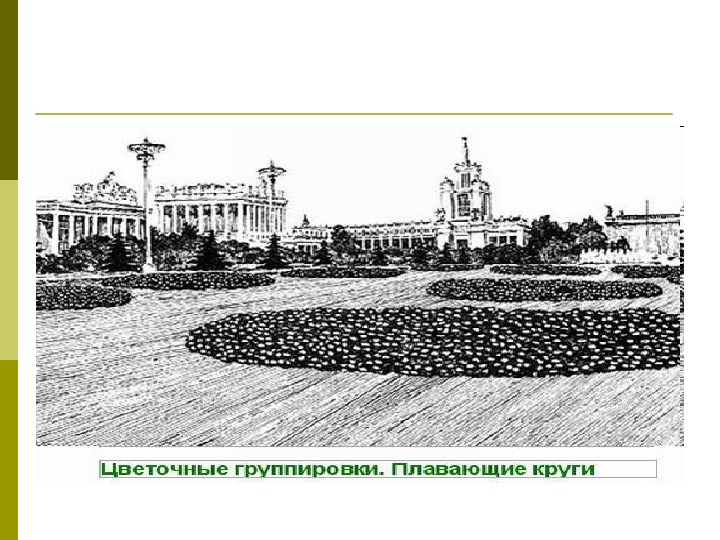
- Размер: 1.3 Mегабайта
- Количество слайдов: 20
Описание презентации In Harmony with the nature The student 1 по слайдам
 In Harmony with the nature The student 1 го a course executed SPb groups in 1 Romanyuk Natalya
In Harmony with the nature The student 1 го a course executed SPb groups in 1 Romanyuk Natalya
 Landscape gardening compositions ECOLOGY AND ELEMENTS park landscape In order that from a set of natural and artificial forms to create uniform park composition, it is necessary to know, the park consists of what elements, to comprehend secrets of their biological and esthetic interaction, receptions of spatial decisions. It is a complex challenge, but an originality of work of a parkostroitel in that and consists that it deals with the live, constantly changing object possessing a magic power of impact on the person. By means of landscape gardening art of people will transform a landscape under beauty laws, solving thus a complex of specific, functional and ideological tasks. In the course of construction of park (garden) there is a synthesis of natural elements of a landscape (vegetation, a relief, water, air) and artificial forms, that is the new type of a landscape is created. On value for park construction elements of a landscape it is possible to arrange in such order: relief, water, vegetation and fauna. Basis of a natural or artificial landscape is the relief. It can be flat, hilly and mountain. Character of a relief considerably influences the architectural and planning solution of the park territory and its volume composition. The most picturesque and various park compositions can be created on the crossed relief. By it also will be explained special attention of parkostroitel to badlands — hills, slopes, ravines, pits.
Landscape gardening compositions ECOLOGY AND ELEMENTS park landscape In order that from a set of natural and artificial forms to create uniform park composition, it is necessary to know, the park consists of what elements, to comprehend secrets of their biological and esthetic interaction, receptions of spatial decisions. It is a complex challenge, but an originality of work of a parkostroitel in that and consists that it deals with the live, constantly changing object possessing a magic power of impact on the person. By means of landscape gardening art of people will transform a landscape under beauty laws, solving thus a complex of specific, functional and ideological tasks. In the course of construction of park (garden) there is a synthesis of natural elements of a landscape (vegetation, a relief, water, air) and artificial forms, that is the new type of a landscape is created. On value for park construction elements of a landscape it is possible to arrange in such order: relief, water, vegetation and fauna. Basis of a natural or artificial landscape is the relief. It can be flat, hilly and mountain. Character of a relief considerably influences the architectural and planning solution of the park territory and its volume composition. The most picturesque and various park compositions can be created on the crossed relief. By it also will be explained special attention of parkostroitel to badlands — hills, slopes, ravines, pits.
 The exposition and bias influence insolation of a slope, and consequently, and soil temperature. In this regard slopes of the southern, east and western exposition are optimum for green plantings. Sometimes, in particular in the southern areas, the best conditions for rest of people and growth of plants happen on northern slopes. The soil at tops and slopes of hills owing to water running off gradually loses fertility, and more damp and rich places of growth are below formed. Parkostroitel, creating green plantings, has to consider this important factor. On the flat district formation of picturesque park space is complicated therefore it is necessary to use the slightest folds of the district and various on height, color and outlines crowns and bushes. Vegetation selection for this or that object has to be carried out taking into account climatic conditions: temperature and humidity of air, amount of precipitation, force and wind direction, etc. Climatic conditions influence not only selection of types of vegetation, but also quantity and nature of green plantings. So, in parks of northern areas open gazonny glades, in southern — the closed spaces with wood and shrubby vegetation prevail, in areas with a temperate climate the opened and closed sites that gives to park landscapes special dynamism alternate. At a modern level of development of an agrotechnology the physical and chemical composition of the soil can be changed, but only on small sites as implementation of similar actions in the big territory manages too expensive. Therefore more economically previously to study the soil on the sites intended for gardening, and to pick up the breeds corresponding to these soil conditions. Water in park composition (lakes, streams, the rivers) is an important parkoobrazuyushchy element. Use of water devices helps to create a dynamic landscape, strengthens esthetic influence of park spaces, has essential impact on a microclimate and soil structure. Depending on an amount of water in park selection of park vegetation is carried out. Near the coastline usually plant hygrophilous plants as coastal shallow and floating wild-growing perennials create bright decorative spots in a park landscape. An important role in parks is played by artificial constructions: pools, decorative reservoirs, fountains, cascades, etc. Various vegetation of gardens and parks — the main material for green construction. Formation of a park landscape from a large number of various plants demands special knowledge and practical skills. Sanitary and hygienic and protective properties of wood vegetation are shown that it allocates bactericidal and fungicide substances (фитонциды), in ozonization of air and clarification it from a dust and gases, in protection of dwellings and the economic centers against a wind, noise, fires, drifts by snow, sand a fine earth. Volatiles and cellular juice of many plants oppress growth of protozoa a tank
The exposition and bias influence insolation of a slope, and consequently, and soil temperature. In this regard slopes of the southern, east and western exposition are optimum for green plantings. Sometimes, in particular in the southern areas, the best conditions for rest of people and growth of plants happen on northern slopes. The soil at tops and slopes of hills owing to water running off gradually loses fertility, and more damp and rich places of growth are below formed. Parkostroitel, creating green plantings, has to consider this important factor. On the flat district formation of picturesque park space is complicated therefore it is necessary to use the slightest folds of the district and various on height, color and outlines crowns and bushes. Vegetation selection for this or that object has to be carried out taking into account climatic conditions: temperature and humidity of air, amount of precipitation, force and wind direction, etc. Climatic conditions influence not only selection of types of vegetation, but also quantity and nature of green plantings. So, in parks of northern areas open gazonny glades, in southern — the closed spaces with wood and shrubby vegetation prevail, in areas with a temperate climate the opened and closed sites that gives to park landscapes special dynamism alternate. At a modern level of development of an agrotechnology the physical and chemical composition of the soil can be changed, but only on small sites as implementation of similar actions in the big territory manages too expensive. Therefore more economically previously to study the soil on the sites intended for gardening, and to pick up the breeds corresponding to these soil conditions. Water in park composition (lakes, streams, the rivers) is an important parkoobrazuyushchy element. Use of water devices helps to create a dynamic landscape, strengthens esthetic influence of park spaces, has essential impact on a microclimate and soil structure. Depending on an amount of water in park selection of park vegetation is carried out. Near the coastline usually plant hygrophilous plants as coastal shallow and floating wild-growing perennials create bright decorative spots in a park landscape. An important role in parks is played by artificial constructions: pools, decorative reservoirs, fountains, cascades, etc. Various vegetation of gardens and parks — the main material for green construction. Formation of a park landscape from a large number of various plants demands special knowledge and practical skills. Sanitary and hygienic and protective properties of wood vegetation are shown that it allocates bactericidal and fungicide substances (фитонциды), in ozonization of air and clarification it from a dust and gases, in protection of dwellings and the economic centers against a wind, noise, fires, drifts by snow, sand a fine earth. Volatiles and cellular juice of many plants oppress growth of protozoa a tank

 Quantitative and qualitative distinctions in microflora of air of the woods depend first of all on structure and age of plantings and a season. So, in the pine and cedar woods air is twice purer (200 -300 bacterial cages on 1 CBM), than in the deciduous. As much as possible the fitontsidnost is shown in summer solar midday, is minimum — in cloudy rainy weather. Vyskoky fitontsidnost young leaves in the redkostoyashchikh and well warmed up landings differ. The chemical nature фитонцидов isn’t opened yet. The essential oils significantly influencing an organism and regulating gas exchange are better studied. Volatiles of a pine possess febrifugal, analgiziruyushchy and expectorant properties; the pine woods ozonize air. Fitontsidny activity of wood plants is caused by their physiological state and depends on conditions of growth, a season, age. The constant component of the air basin of Earth is the atmospheric dust representing firm particles. These particles are in air in a suspension. In 1 cubic cm of city air about 100 thousand motes, while in the sample of air taken over the ocean, their quantity minimum — 100 pieces are. For the last some tens years the dust content of the atmosphere increased many times over. Thereof transparency of the atmosphere decreased, sunlight reflection that leads to change of a climatic mode on Earth surface increased. Strong impurity of air has an adverse effect on health and human health. Green plantings reduce an air dust content. On 1 sq. m of the area of leaves 21 -860 g of a dust are late. The air dust content under trees is less, than on the open district, on the average for 42% during vegetation and for 37% during the leafless period. Even in small gardens of a dust 30% less in comparison with open space. Filtrational ability of wood plants depends on a structure and density of krone, the size and a form of a sheet plate, its roughness. Rigid, sticky, felt, wrinkled leaves detain a dust, than leaves with a smooth surface better. Coniferous breeds are very effective in this regard: the unit of weight of needles detains a dust 1, 5 times bigger, than a unit of weight of leaves. More intensive subsidence of a dust over green plantings is caused both features of a wind mode, and the descending currents of air caused by difference of temperatures in planting and over it. Together with dust emissions from fire chambers and pipes of factories, plants and the household enterprises nitrogen and sulfur oxides, carbon monoxide and resinous substances get to air. And here wood plants act as natural hospital attendants.
Quantitative and qualitative distinctions in microflora of air of the woods depend first of all on structure and age of plantings and a season. So, in the pine and cedar woods air is twice purer (200 -300 bacterial cages on 1 CBM), than in the deciduous. As much as possible the fitontsidnost is shown in summer solar midday, is minimum — in cloudy rainy weather. Vyskoky fitontsidnost young leaves in the redkostoyashchikh and well warmed up landings differ. The chemical nature фитонцидов isn’t opened yet. The essential oils significantly influencing an organism and regulating gas exchange are better studied. Volatiles of a pine possess febrifugal, analgiziruyushchy and expectorant properties; the pine woods ozonize air. Fitontsidny activity of wood plants is caused by their physiological state and depends on conditions of growth, a season, age. The constant component of the air basin of Earth is the atmospheric dust representing firm particles. These particles are in air in a suspension. In 1 cubic cm of city air about 100 thousand motes, while in the sample of air taken over the ocean, their quantity minimum — 100 pieces are. For the last some tens years the dust content of the atmosphere increased many times over. Thereof transparency of the atmosphere decreased, sunlight reflection that leads to change of a climatic mode on Earth surface increased. Strong impurity of air has an adverse effect on health and human health. Green plantings reduce an air dust content. On 1 sq. m of the area of leaves 21 -860 g of a dust are late. The air dust content under trees is less, than on the open district, on the average for 42% during vegetation and for 37% during the leafless period. Even in small gardens of a dust 30% less in comparison with open space. Filtrational ability of wood plants depends on a structure and density of krone, the size and a form of a sheet plate, its roughness. Rigid, sticky, felt, wrinkled leaves detain a dust, than leaves with a smooth surface better. Coniferous breeds are very effective in this regard: the unit of weight of needles detains a dust 1, 5 times bigger, than a unit of weight of leaves. More intensive subsidence of a dust over green plantings is caused both features of a wind mode, and the descending currents of air caused by difference of temperatures in planting and over it. Together with dust emissions from fire chambers and pipes of factories, plants and the household enterprises nitrogen and sulfur oxides, carbon monoxide and resinous substances get to air. And here wood plants act as natural hospital attendants.
 Nitrogen (77, 09%), oxygen (20, 75%), argon and neon (about 1%), carbon dioxide (0, 03%), hydrogen (0, 01%), fluctuating impurity of water vapor (about 1, 2%) is a part of air of a ground layer of the atmosphere, mineral salts and flying organic substances (no more than 0, 01%). In the course of photosynthesis green plantings assimilate carbon dioxide and enrich the atmosphere with oxygen. In sunny warm days of 1 hectare of the wood absorbs 220 -80 kg of carbon dioxide and allocates 180 -220 kg of oxygen which the wind carries on long distances. Many breeds of trees increase air ionization — concentration of material carriers of electric charges of atmospheric ions containing in air. Most well the human body is influenced by the lungs, negatively loaded ions. The heavy, positively loaded ions are harmful to an organism. These are the ionized molecules of a smoke, a water dust and other substances polluting air. The quantity of easy ions is increased considerably by such trees: birch, oak red, oak chereshchaty, fir-tree ordinary, willow plakuchy, maple silvery, maple red, larch Siberian, mountain ash ordinary, pine ordinary, thuja western. Together with a dust on trees, bushes, a grass settles to 60% of sulphurous gas. Under crowns and in street landings it is 24% less, than on open places. Fluorine and the fluoric hydrogen which significant amount green plantings also detain are especially toxic. The role of green plantings in air clarification from a dust and industrial gases is immeasurably great. Therefore they need to be created in the form of sanitary protection zones in the territory of industrial and production agricultural facilities. Plants, absorbing and filtering harmful gases, interfere with their penetration into populated zones. But it is necessary to remember that the industrial wastes getting to the atmosphere (except carbon dioxide), depress plants. The dust is littered by an ustyitsa of leaves, worsens their elasticity. The cement dust alkalinizes reaction of cellular juice of leaves and corrodes their integumentary fabrics. Sulphurous gas, getting to cellular juice, forms in it strong acids which lower p. H reaction to 2, 0 -2, 5 and poison plasma. More than others evergreen plants, in particular coniferous (except for a larch and a thuja) suffer from poisoning with gas. The most gas-resistant are a poplar Canadian and balsam, a linden fine-leaved, a maple yasenelistny, a willow white, a juniper ordinary, elder red, a honeysuckle, спирея kalinolistny. These breeds are recommended to be used for gardening of gas-polluted areas. The wind-shelter role of wood plants is shown in decrease in speed of a wind, dispersal and change of the direction of an air stream. Forest plantings protect soils from blowing, transfer and a fine earth deposit, and agricultural grounds, settlements, iron and highways — from drifts by sand, a dust and snow, form a peculiar microclimate in a zone of protective influence of plantings. For photosynthesis and transpiration of plants.
Nitrogen (77, 09%), oxygen (20, 75%), argon and neon (about 1%), carbon dioxide (0, 03%), hydrogen (0, 01%), fluctuating impurity of water vapor (about 1, 2%) is a part of air of a ground layer of the atmosphere, mineral salts and flying organic substances (no more than 0, 01%). In the course of photosynthesis green plantings assimilate carbon dioxide and enrich the atmosphere with oxygen. In sunny warm days of 1 hectare of the wood absorbs 220 -80 kg of carbon dioxide and allocates 180 -220 kg of oxygen which the wind carries on long distances. Many breeds of trees increase air ionization — concentration of material carriers of electric charges of atmospheric ions containing in air. Most well the human body is influenced by the lungs, negatively loaded ions. The heavy, positively loaded ions are harmful to an organism. These are the ionized molecules of a smoke, a water dust and other substances polluting air. The quantity of easy ions is increased considerably by such trees: birch, oak red, oak chereshchaty, fir-tree ordinary, willow plakuchy, maple silvery, maple red, larch Siberian, mountain ash ordinary, pine ordinary, thuja western. Together with a dust on trees, bushes, a grass settles to 60% of sulphurous gas. Under crowns and in street landings it is 24% less, than on open places. Fluorine and the fluoric hydrogen which significant amount green plantings also detain are especially toxic. The role of green plantings in air clarification from a dust and industrial gases is immeasurably great. Therefore they need to be created in the form of sanitary protection zones in the territory of industrial and production agricultural facilities. Plants, absorbing and filtering harmful gases, interfere with their penetration into populated zones. But it is necessary to remember that the industrial wastes getting to the atmosphere (except carbon dioxide), depress plants. The dust is littered by an ustyitsa of leaves, worsens their elasticity. The cement dust alkalinizes reaction of cellular juice of leaves and corrodes their integumentary fabrics. Sulphurous gas, getting to cellular juice, forms in it strong acids which lower p. H reaction to 2, 0 -2, 5 and poison plasma. More than others evergreen plants, in particular coniferous (except for a larch and a thuja) suffer from poisoning with gas. The most gas-resistant are a poplar Canadian and balsam, a linden fine-leaved, a maple yasenelistny, a willow white, a juniper ordinary, elder red, a honeysuckle, спирея kalinolistny. These breeds are recommended to be used for gardening of gas-polluted areas. The wind-shelter role of wood plants is shown in decrease in speed of a wind, dispersal and change of the direction of an air stream. Forest plantings protect soils from blowing, transfer and a fine earth deposit, and agricultural grounds, settlements, iron and highways — from drifts by sand, a dust and snow, form a peculiar microclimate in a zone of protective influence of plantings. For photosynthesis and transpiration of plants.
 Influence of plants on intensity of a sound while is very poorly studied. It is established that best of all absorb a breed sound with dense kroner, the long period of an oblistveniye, the dense large leaves perpendicularly located to н 6 аправлению of sound waves. The correct selection and placement of wood decorative vegetation it is possible to reduce noise. It is known also that leaves of trees and bushes eliminate from a noise range high-frequency sounds — the most harmful to nervous system of the person. Oblistvenny crowns, dense landings before building absorb 20 -25% of sound energy, and other part reflect and disseminate. Sound waves, being reflected from variously focused sheet plates, loses energy owing to leaf shift. In noise-protective landings it is recommended to land such breeds: maple acutifoliate, lindens large-leaved and fine-leaved, poplar Berlin, oak chereshchaty, holly, beech, hornbeam; from bushes — a guelder-rose, a rhododendron, a lilac, a leshchina. In houses climbers considerably weaken noise: they by six-eight times increase sound-absorbing ability of walls. Wood plants play an important role in protection of structures against fires. Thanks to a large amount of moisture trees and bushes light up slowly and interfere with fire distribution. Deciduous breeds are steadiest against fire. At placement of wood vegetation in park space, especially soliter in small groups, it is necessary to consider possibility of defeat of trees a lightning. Degree of a porazhayemost depends on features of electric field of krone, a trunk and root system. Consider that possibility of defeat of a tree a lightning increases with increase in a water-supply in a trunk. Therefore the lightning often gets to trees with the deep strezhnevy root getting into more damp layers of earth, in particular to old copies of an oak, birch bark, ильма, an ash-tree, a pine, a larch with thick jointed bark. Less often trees with smooth bark — a beech, a hornbeam, a plane tree, an alder gray, a chestnut horse, sweet cherry are surprised a lightning. The rain water moistening a surface of a trunk, plays a lightning rod role. Especially often the lightning strikes separate, edge, towering over neighbors, trees ostrovershinny and growing on heights. It is established that intensity of electric field of the atmosphere with each meter increases on + 130 V. Sledovatelno, the plant is higher, the it is more potential difference and the negative ions are more intensively attracted. Almost never the trees growing in damp lowlands are surprised. Very seldom the lightning gets to a poplar. There are bases to assume that it at all doesn’t install electrical equipment. The tree allocates many negatively loaded ions which as though shroud it in a protective cloud.
Influence of plants on intensity of a sound while is very poorly studied. It is established that best of all absorb a breed sound with dense kroner, the long period of an oblistveniye, the dense large leaves perpendicularly located to н 6 аправлению of sound waves. The correct selection and placement of wood decorative vegetation it is possible to reduce noise. It is known also that leaves of trees and bushes eliminate from a noise range high-frequency sounds — the most harmful to nervous system of the person. Oblistvenny crowns, dense landings before building absorb 20 -25% of sound energy, and other part reflect and disseminate. Sound waves, being reflected from variously focused sheet plates, loses energy owing to leaf shift. In noise-protective landings it is recommended to land such breeds: maple acutifoliate, lindens large-leaved and fine-leaved, poplar Berlin, oak chereshchaty, holly, beech, hornbeam; from bushes — a guelder-rose, a rhododendron, a lilac, a leshchina. In houses climbers considerably weaken noise: they by six-eight times increase sound-absorbing ability of walls. Wood plants play an important role in protection of structures against fires. Thanks to a large amount of moisture trees and bushes light up slowly and interfere with fire distribution. Deciduous breeds are steadiest against fire. At placement of wood vegetation in park space, especially soliter in small groups, it is necessary to consider possibility of defeat of trees a lightning. Degree of a porazhayemost depends on features of electric field of krone, a trunk and root system. Consider that possibility of defeat of a tree a lightning increases with increase in a water-supply in a trunk. Therefore the lightning often gets to trees with the deep strezhnevy root getting into more damp layers of earth, in particular to old copies of an oak, birch bark, ильма, an ash-tree, a pine, a larch with thick jointed bark. Less often trees with smooth bark — a beech, a hornbeam, a plane tree, an alder gray, a chestnut horse, sweet cherry are surprised a lightning. The rain water moistening a surface of a trunk, plays a lightning rod role. Especially often the lightning strikes separate, edge, towering over neighbors, trees ostrovershinny and growing on heights. It is established that intensity of electric field of the atmosphere with each meter increases on + 130 V. Sledovatelno, the plant is higher, the it is more potential difference and the negative ions are more intensively attracted. Almost never the trees growing in damp lowlands are surprised. Very seldom the lightning gets to a poplar. There are bases to assume that it at all doesn’t install electrical equipment. The tree allocates many negatively loaded ions which as though shroud it in a protective cloud.
 Harmony
Harmony
 STRUCTURE park space Basis of a modern parkostroyeniye is the landscape and ecological method. Considering interdependence between vegetation and the environment of its dwelling, and also the relation of plants to other elements ланашафта. On a role in formation of park plantings trees can be divided into four groups: parkoobrazuyushchy, accompanying, decorative and экзоты. Durable local breeds and some экзоты belong to the parkoobrazuyushchy. Possessing the most valuable decorative qualities, creating a certain nature of plantings, in particular a birch warty, a beech, European, a linden fine-leaved, a larch Siberian, a larch Japanese, a fir-tree ordinary, etc. Accompanying are the trees of the small sizes playing the subordinated role in wood combinations, for example a mountain ash ordinary, a hawthorn, a pear Ussuriisk, a bird cherry ordinary. Decorative it is accepted to call beautifully blossoming with bright fruits, with the painted foliage, characteristic kroner (plakuchy, helicoid, multibarrelled) trees and bushes. To экзотам plants of overseas flora belong. Depending on a role which is played by plantings in formation of intra park spaces, them subdivide on protective, structural, decorative and temporary. Protective plantings which form of steady local breeds, create optimum conditions for visitors of park and for intra park plants, protecting them from a wind, a dust, noise. Width of protective plantings has to be not less than 60 m. They can have an appearance of picturesque edges or put deep languages in internal spaces — the main function of structural plantings: massifs, groves, curtains. They are under construction from the parkoobrazuyushchikh and the accompanying breeds selected for the typological or fitotsenotichesky principle. Structural plantings are the main subject, a melody of composition of park, they create a background for decorative groups. Decorative plantings — variations, accents, chords. Groups, buketny landings, soliter, avenues treat decorative plantings. Temporary plantings serve formation of park spaces in squeezed term. In such plantings fast-growing trees and beautifully blossoming bushes are used. Animals and birds also are necessary park elements as destroy wreckers of green plantings and give to compositions a special charm. In the territory of park it is necessary to create гнездовья, the feeding troughs, special landings for attraction of various birds. Not to scare away birds and animals, the quantity of loudspeakers in the territory of park has to be limited.
STRUCTURE park space Basis of a modern parkostroyeniye is the landscape and ecological method. Considering interdependence between vegetation and the environment of its dwelling, and also the relation of plants to other elements ланашафта. On a role in formation of park plantings trees can be divided into four groups: parkoobrazuyushchy, accompanying, decorative and экзоты. Durable local breeds and some экзоты belong to the parkoobrazuyushchy. Possessing the most valuable decorative qualities, creating a certain nature of plantings, in particular a birch warty, a beech, European, a linden fine-leaved, a larch Siberian, a larch Japanese, a fir-tree ordinary, etc. Accompanying are the trees of the small sizes playing the subordinated role in wood combinations, for example a mountain ash ordinary, a hawthorn, a pear Ussuriisk, a bird cherry ordinary. Decorative it is accepted to call beautifully blossoming with bright fruits, with the painted foliage, characteristic kroner (plakuchy, helicoid, multibarrelled) trees and bushes. To экзотам plants of overseas flora belong. Depending on a role which is played by plantings in formation of intra park spaces, them subdivide on protective, structural, decorative and temporary. Protective plantings which form of steady local breeds, create optimum conditions for visitors of park and for intra park plants, protecting them from a wind, a dust, noise. Width of protective plantings has to be not less than 60 m. They can have an appearance of picturesque edges or put deep languages in internal spaces — the main function of structural plantings: massifs, groves, curtains. They are under construction from the parkoobrazuyushchikh and the accompanying breeds selected for the typological or fitotsenotichesky principle. Structural plantings are the main subject, a melody of composition of park, they create a background for decorative groups. Decorative plantings — variations, accents, chords. Groups, buketny landings, soliter, avenues treat decorative plantings. Temporary plantings serve formation of park spaces in squeezed term. In such plantings fast-growing trees and beautifully blossoming bushes are used. Animals and birds also are necessary park elements as destroy wreckers of green plantings and give to compositions a special charm. In the territory of park it is necessary to create гнездовья, the feeding troughs, special landings for attraction of various birds. Not to scare away birds and animals, the quantity of loudspeakers in the territory of park has to be limited.
 Simple composite schemes of parks (at the left): 1 — the closed; 2 — the axial; 3 — the ring; 4 — the star-shaped; 5 — the beam. Difficult composite schemes of parks (on the right): 1 — osevaya+luchevy; 2 — osevaya+zvezdchaty; 3 — koltsevaya+luchevy; 4 — osevaya+koltsevaya+zvezdchaty; 5 — osevaya+koltsevy
Simple composite schemes of parks (at the left): 1 — the closed; 2 — the axial; 3 — the ring; 4 — the star-shaped; 5 — the beam. Difficult composite schemes of parks (on the right): 1 — osevaya+luchevy; 2 — osevaya+zvezdchaty; 3 — koltsevaya+luchevy; 4 — osevaya+koltsevaya+zvezdchaty; 5 — osevaya+koltsevy
 Any park object should be formed under composition laws. The composition in landscape gardening art is an arrangement of natural elements, artificial forms, parts of the territory of park on the certain spatial system caused by an ideological plan and purpose of object. Creation of such difficult work of art as the park, compels us to divide for methodological reasons composition on planning and spatial, or volume. The planning composition is a two-dimensional planning on the plane, and spatial — creation of park landscapes from the volume elements observed by the person at rest, or other composition of park depends on social conditions of the territory and creative identity of the author. The park space consists of system of avenues, reservoirs, vegetation, engineering constructions and the small architectural forms united by planning and spatial composition. For its formation use various methods of planning of a ratio of volume vegetable and artificial forms taking into account specific art composite regularities. Would be a mistake to consider planning composition of park space only as the two-dimensional solution of the park territory. The basis of planning of park is made by functional processes which need to be organized in the territory. The planning composition has to be clear and accurate. Therefore it is desirable that it consisted of simple composite schemes: closed, beam, axial, ring or star-shaped. Most often difficult composite schemes are consolidated to such options: axial + beam, axial + star-shaped, radial + ring, axial + beam + ring, axial + the ring. The axial, beam or ring scheme of composition is created usually by park roads, but not always. Sometimes beams of composition are glades and distant prospects which are grouped round a big glade. Sample of such composite decision are park glades Alexandria. Longitudinal axes of reservoirs, for example, system of ponds of Trostyanetsky park, Sofiyevka form a basis of composition of many parks. Composite axis of park Shevchenkovsky Guy in Lviv it is directed along a water separate spine, and specific beams — towards a picturesque silhouette of the ancient city. These examples testify that an environment of the territory of park and surrounding landscapes have essential impact on composite structure.
Any park object should be formed under composition laws. The composition in landscape gardening art is an arrangement of natural elements, artificial forms, parts of the territory of park on the certain spatial system caused by an ideological plan and purpose of object. Creation of such difficult work of art as the park, compels us to divide for methodological reasons composition on planning and spatial, or volume. The planning composition is a two-dimensional planning on the plane, and spatial — creation of park landscapes from the volume elements observed by the person at rest, or other composition of park depends on social conditions of the territory and creative identity of the author. The park space consists of system of avenues, reservoirs, vegetation, engineering constructions and the small architectural forms united by planning and spatial composition. For its formation use various methods of planning of a ratio of volume vegetable and artificial forms taking into account specific art composite regularities. Would be a mistake to consider planning composition of park space only as the two-dimensional solution of the park territory. The basis of planning of park is made by functional processes which need to be organized in the territory. The planning composition has to be clear and accurate. Therefore it is desirable that it consisted of simple composite schemes: closed, beam, axial, ring or star-shaped. Most often difficult composite schemes are consolidated to such options: axial + beam, axial + star-shaped, radial + ring, axial + beam + ring, axial + the ring. The axial, beam or ring scheme of composition is created usually by park roads, but not always. Sometimes beams of composition are glades and distant prospects which are grouped round a big glade. Sample of such composite decision are park glades Alexandria. Longitudinal axes of reservoirs, for example, system of ponds of Trostyanetsky park, Sofiyevka form a basis of composition of many parks. Composite axis of park Shevchenkovsky Guy in Lviv it is directed along a water separate spine, and specific beams — towards a picturesque silhouette of the ancient city. These examples testify that an environment of the territory of park and surrounding landscapes have essential impact on composite structure.
 Park roads and avenues Planning basis — composition of system of park paths and avenues as the landscape of park is generally perceived from roads. On a tracing in the plan park avenues and roads can be only two types: geometrical (rectilinear) and picturesque (free). At geometrical planning decisions a basis of composition are strict, balanced proportions. Picturesque planning influences the person unexpected, based on contrast, decisions. The choice of this or that planning composition of park paths and avenues depends on natural factors, attendance, a functional purpose, zoning of the park territory, features of identity of the author of planning.
Park roads and avenues Planning basis — composition of system of park paths and avenues as the landscape of park is generally perceived from roads. On a tracing in the plan park avenues and roads can be only two types: geometrical (rectilinear) and picturesque (free). At geometrical planning decisions a basis of composition are strict, balanced proportions. Picturesque planning influences the person unexpected, based on contrast, decisions. The choice of this or that planning composition of park paths and avenues depends on natural factors, attendance, a functional purpose, zoning of the park territory, features of identity of the author of planning.

 Planning of the park territory is carried out according to the unity law, that is associations of all elements of planning to ensemble, the organic whole. The highest form art expressions of ideological and esthetic problems of the Soviet architecture is formation of the ensembles which main signs are composite integrity and architectural and spatial unity. The territory of park divide into functional zones. Various zones on a functional purpose unite in one or several planning knots, the composite centers subordinated to the general composite plan. The network of park avenues and roads should be laid taking into account expedient distribution of visitors on various zones located in the territory of park. The direction of park roads is influenced to a great extent by a relief and park vegetation. The system of park communications consists of the following elements: main avenue, belt road, mezhdugazonny avenues, intra-zone avenues and roads, various platforms and areas (specific, sports, etc. ). Each element of system carries out certain functions and demands the corresponding decorative registration by means of receptions and means of spatial composition. Glavnaya Avenue provides communication of the composite centers of park among themselves and with the central entrance. As on the main avenue there is a distribution of the main flows of visitors on the park territory, its width has to be not less than 10 m. Depending on a relief the main avenue sometimes plan with small bends. It can be divided lawns or flower beds into separate strips that will help to order movement on the main communication, will create additional opportunities for decorative registration. It is best of all to construct a ratio of width of a lawn and a foot strip on the basis of «golden ratio» proportions (see below). At decorative registration of the main avenue traditional reception of domestic landscape gardening construction — ordinary landings one-pedigree the parkoobrazuyushchikh of trees (a linden, a maple acutifoliate, a chestnut, a poplar pyramidal, a fir-tree, a thuja and others) is usually applied. The maximum functional loading is the share of the ring park road. It provides association of various zones on a functional purpose, is the most extended walking route, a link between main and minor entrances. The belt road often crosses other roads of park, than nature of its decorative registration considerably is defined. Mezhduzonny avenues pass at the edges of park zones and usually connect the belt road and additional entrances with the park composite centers. By means of roads and avenues in a zone the fullest functioning of this territory is provided.
Planning of the park territory is carried out according to the unity law, that is associations of all elements of planning to ensemble, the organic whole. The highest form art expressions of ideological and esthetic problems of the Soviet architecture is formation of the ensembles which main signs are composite integrity and architectural and spatial unity. The territory of park divide into functional zones. Various zones on a functional purpose unite in one or several planning knots, the composite centers subordinated to the general composite plan. The network of park avenues and roads should be laid taking into account expedient distribution of visitors on various zones located in the territory of park. The direction of park roads is influenced to a great extent by a relief and park vegetation. The system of park communications consists of the following elements: main avenue, belt road, mezhdugazonny avenues, intra-zone avenues and roads, various platforms and areas (specific, sports, etc. ). Each element of system carries out certain functions and demands the corresponding decorative registration by means of receptions and means of spatial composition. Glavnaya Avenue provides communication of the composite centers of park among themselves and with the central entrance. As on the main avenue there is a distribution of the main flows of visitors on the park territory, its width has to be not less than 10 m. Depending on a relief the main avenue sometimes plan with small bends. It can be divided lawns or flower beds into separate strips that will help to order movement on the main communication, will create additional opportunities for decorative registration. It is best of all to construct a ratio of width of a lawn and a foot strip on the basis of «golden ratio» proportions (see below). At decorative registration of the main avenue traditional reception of domestic landscape gardening construction — ordinary landings one-pedigree the parkoobrazuyushchikh of trees (a linden, a maple acutifoliate, a chestnut, a poplar pyramidal, a fir-tree, a thuja and others) is usually applied. The maximum functional loading is the share of the ring park road. It provides association of various zones on a functional purpose, is the most extended walking route, a link between main and minor entrances. The belt road often crosses other roads of park, than nature of its decorative registration considerably is defined. Mezhduzonny avenues pass at the edges of park zones and usually connect the belt road and additional entrances with the park composite centers. By means of roads and avenues in a zone the fullest functioning of this territory is provided.
 The highly artistic planning composition of park avenues and paths can be created only if parkostroitel adhere to the following rules: — the tracing in the plan corresponds to character of a relief and has smooth lines of a bend; — turns and bends of roads and avenues are justified by landscape elements; — forks and an otmykaniye don’t form acute angles of lawns, and axes are crossed in one point and whenever possible at right angle; — on width the avenue or the road are identical throughout, and each their expansion is justified; the park equipment (booths, benches) shouldn’t influence road width; — density of system of avenues and roads is minimum; — the road surfacing strong also has decorative value.
The highly artistic planning composition of park avenues and paths can be created only if parkostroitel adhere to the following rules: — the tracing in the plan corresponds to character of a relief and has smooth lines of a bend; — turns and bends of roads and avenues are justified by landscape elements; — forks and an otmykaniye don’t form acute angles of lawns, and axes are crossed in one point and whenever possible at right angle; — on width the avenue or the road are identical throughout, and each their expansion is justified; the park equipment (booths, benches) shouldn’t influence road width; — density of system of avenues and roads is minimum; — the road surfacing strong also has decorative value.
 FLOWER PLANTS in park compositions An important role in landscape gardening compositions is played by various flower groups. Coloring, form and aroma of flowers and blossoming branches awake the imagination, lighten mood, return cheerfulness and energy. Therefore at design of park, a garden, the square it is necessary to think over planning of flower beds carefully. Now flower registration undergoes big changes. Dominating in parks, gardens, squares regular flower beds are forced out landscape as the most progressive and economic. Flower beds become simpler, lakonichny, but at the same time is brighter and more colourful. Expensive carpet, one-year, hothouse горшочные and rassadochny flower plants it is expedient to replace long-term. They are three-four times cheaper one-year and at 10 -12 than times — carpet. Flower beds can conditionally be divided into two look: functional and exposition. Functional flower beds give splendor to the main composite centers, I focus attention on interesting constructions, sculptures, etc. The entrance to park has to have a bright flower registration and colourful. Here the warm scale, large dabs of one color or a combination of the red, pink, orange tones creating festive mood is preferable. At some distance from entrance orchestra seats in the direction of the main movement flower spots of cold tones — from blue to violet are pertinent. Functional flower movement of people, especially on the main foot communications. It use to direct attention of visitors of park to a certain prospect. As a rule, flowers don’t put in prospect focus, but it is sometimes expedient to focus attention on any perennial or group of perennials. Flowers are capable to strengthen or weaken emotional perception of composition. So, the bright spot before group of dark and coniferous fir-trees can make a microlandscape more juicy. If the flower spot to arrange before blue spruces, it will weaken decorative effect of wood group. The flower bed has to fit into a surrounding landscape harmoniously. For example, it is necessary to remember that irises, functions are in harmony with water, and Cannes, salviya, geraniums contrast. Having flower beds before the park building, it is necessary to consider nature of its architecture. Before the building of classical architecture accurate regular methods of flower registration are especially effective. Flower beds before the modern buildings built of glass and concrete, have to emphasize their ease and lightness. Selecting flower groups of this or that coloring, it is necessary to take a facade coloring into account. Sites of separate flower cultures, or monogardens belong to exposition flower beds (rosaries, a georginariya, iridariya, tyulpanariya), and gardens of seasonal effects, in particular gardens of continuous blossoming, the rock aria, etc. The gardens, blossoming long time, belong to active composite elements therefore they should be coordinated to the main directions of movement of visitors. There are the parks calculated on defined сез
FLOWER PLANTS in park compositions An important role in landscape gardening compositions is played by various flower groups. Coloring, form and aroma of flowers and blossoming branches awake the imagination, lighten mood, return cheerfulness and energy. Therefore at design of park, a garden, the square it is necessary to think over planning of flower beds carefully. Now flower registration undergoes big changes. Dominating in parks, gardens, squares regular flower beds are forced out landscape as the most progressive and economic. Flower beds become simpler, lakonichny, but at the same time is brighter and more colourful. Expensive carpet, one-year, hothouse горшочные and rassadochny flower plants it is expedient to replace long-term. They are three-four times cheaper one-year and at 10 -12 than times — carpet. Flower beds can conditionally be divided into two look: functional and exposition. Functional flower beds give splendor to the main composite centers, I focus attention on interesting constructions, sculptures, etc. The entrance to park has to have a bright flower registration and colourful. Here the warm scale, large dabs of one color or a combination of the red, pink, orange tones creating festive mood is preferable. At some distance from entrance orchestra seats in the direction of the main movement flower spots of cold tones — from blue to violet are pertinent. Functional flower movement of people, especially on the main foot communications. It use to direct attention of visitors of park to a certain prospect. As a rule, flowers don’t put in prospect focus, but it is sometimes expedient to focus attention on any perennial or group of perennials. Flowers are capable to strengthen or weaken emotional perception of composition. So, the bright spot before group of dark and coniferous fir-trees can make a microlandscape more juicy. If the flower spot to arrange before blue spruces, it will weaken decorative effect of wood group. The flower bed has to fit into a surrounding landscape harmoniously. For example, it is necessary to remember that irises, functions are in harmony with water, and Cannes, salviya, geraniums contrast. Having flower beds before the park building, it is necessary to consider nature of its architecture. Before the building of classical architecture accurate regular methods of flower registration are especially effective. Flower beds before the modern buildings built of glass and concrete, have to emphasize their ease and lightness. Selecting flower groups of this or that coloring, it is necessary to take a facade coloring into account. Sites of separate flower cultures, or monogardens belong to exposition flower beds (rosaries, a georginariya, iridariya, tyulpanariya), and gardens of seasonal effects, in particular gardens of continuous blossoming, the rock aria, etc. The gardens, blossoming long time, belong to active composite elements therefore they should be coordinated to the main directions of movement of visitors. There are the parks calculated on defined сез


 Flower groups — a new effective type of flower registration. (P. 93 fig. ). These are ornamental plants of various grades of one look, forming correct circles, squares, rectangles, and also the wrong geometrical figures. Flower groups place in the parternykh parts of park, near walking paths from stone or concrete plates. Coverings from concrete, silicated and other plates can be a good background for flower groups. However in park the best background for flowers is the lawn, from brightness and which ukhozhennost the effektnost of flower registration depends. Flower groups apply to registration the parternykh of squares in the centers of the cities, before public buildings, rural clubs and palaces of culture, in the parternykh parts of landscape parks. Blossoming lawns (multicoloured, or Mauritian) — very interesting type of flower registration. They can be long-term and one-year. At creation of one-year blossoming lawns in mix of herbs beautifully blossoming odnoletnik (аллисумы, eshsholtion, pansies, a marigold, pyrethrum), including fragrant flowers — a mignonette, матиолу, etc. add. For creation of long-term blossoming lawns on existing grassy lawns grow up a kupalnitsa, a camomile, hand bells, the adonis, a clover. Good results are yielded by introduction of early-spring bulbous plants, for example snowdrops, primroses, violets, crocuses, мускари, etc. Big glades which always can be found in landscape park are necessary for creation of blossoming lawn
Flower groups — a new effective type of flower registration. (P. 93 fig. ). These are ornamental plants of various grades of one look, forming correct circles, squares, rectangles, and also the wrong geometrical figures. Flower groups place in the parternykh parts of park, near walking paths from stone or concrete plates. Coverings from concrete, silicated and other plates can be a good background for flower groups. However in park the best background for flowers is the lawn, from brightness and which ukhozhennost the effektnost of flower registration depends. Flower groups apply to registration the parternykh of squares in the centers of the cities, before public buildings, rural clubs and palaces of culture, in the parternykh parts of landscape parks. Blossoming lawns (multicoloured, or Mauritian) — very interesting type of flower registration. They can be long-term and one-year. At creation of one-year blossoming lawns in mix of herbs beautifully blossoming odnoletnik (аллисумы, eshsholtion, pansies, a marigold, pyrethrum), including fragrant flowers — a mignonette, матиолу, etc. add. For creation of long-term blossoming lawns on existing grassy lawns grow up a kupalnitsa, a camomile, hand bells, the adonis, a clover. Good results are yielded by introduction of early-spring bulbous plants, for example snowdrops, primroses, violets, crocuses, мускари, etc. Big glades which always can be found in landscape park are necessary for creation of blossoming lawn


